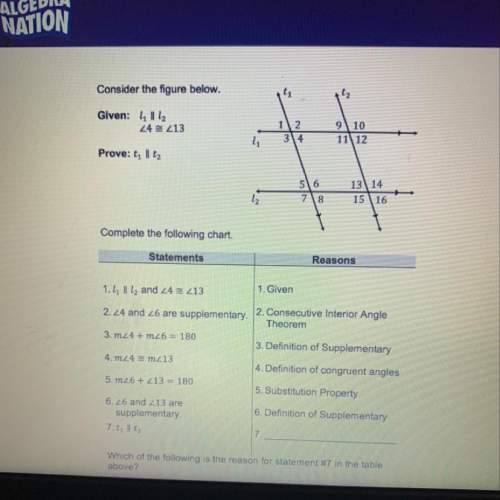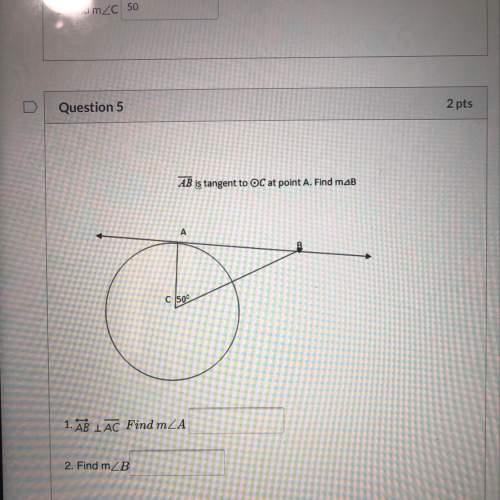Which of the following is the reason for statement #7 in the table above?
a. converse of the...

Mathematics, 29.10.2019 03:31 CJSession
Which of the following is the reason for statement #7 in the table above?
a. converse of the alt. interior angles theorem
b. converse of the corresponding angles theorem
c. converse of the same-side consecutive angles theorem
d. transitive prop.


Answers: 1


Other questions on the subject: Mathematics

Mathematics, 21.06.2019 13:30, roserose3098
Jayne is studying urban planning and finds that her town is decreasing in population by 3% each year the population of her town is changing by a constant rate
Answers: 2


Mathematics, 21.06.2019 20:00, whosdarrin9396
If cos(2x) = tan^2(y), show that cos(2y) = tan^2(x).
Answers: 3

Mathematics, 21.06.2019 20:10, tiggyandrep2dbee
Look at the hyperbola graphed below. the hyperbola gets very close to the red lines on the graph, but it never touches them. which term describes each of the red lines? o o o o a. asymptote b. directrix c. focus d. axis
Answers: 3
You know the right answer?
Questions in other subjects:





Biology, 24.12.2019 19:31








